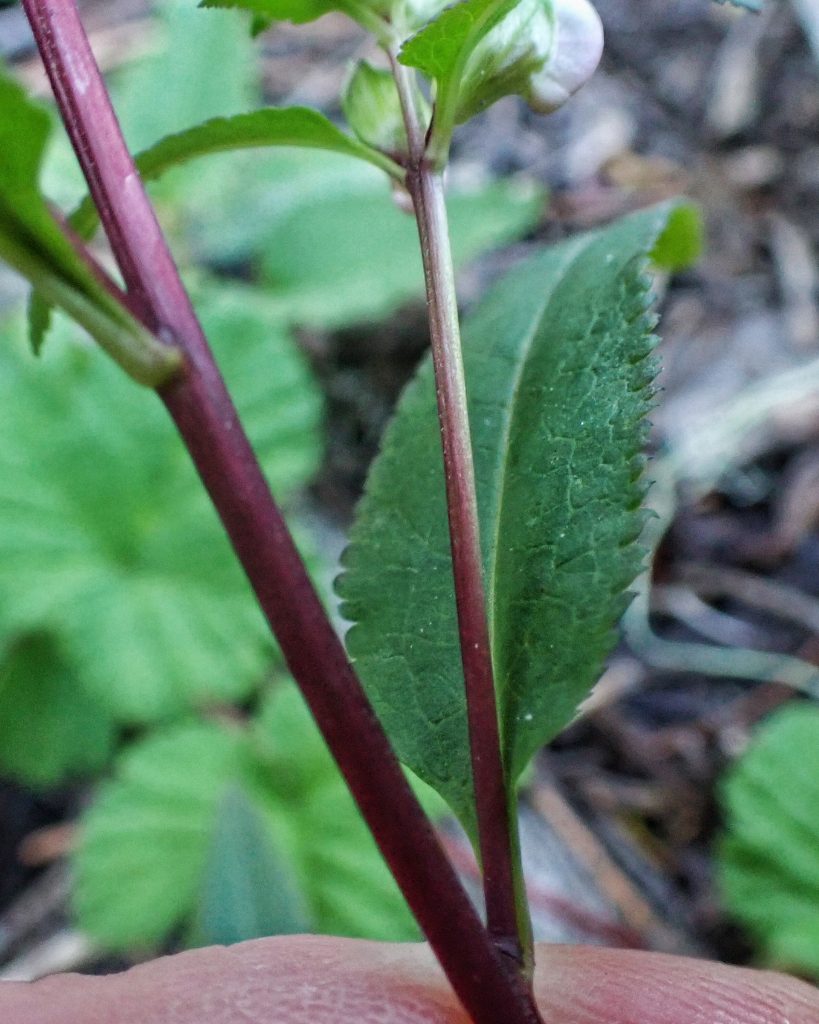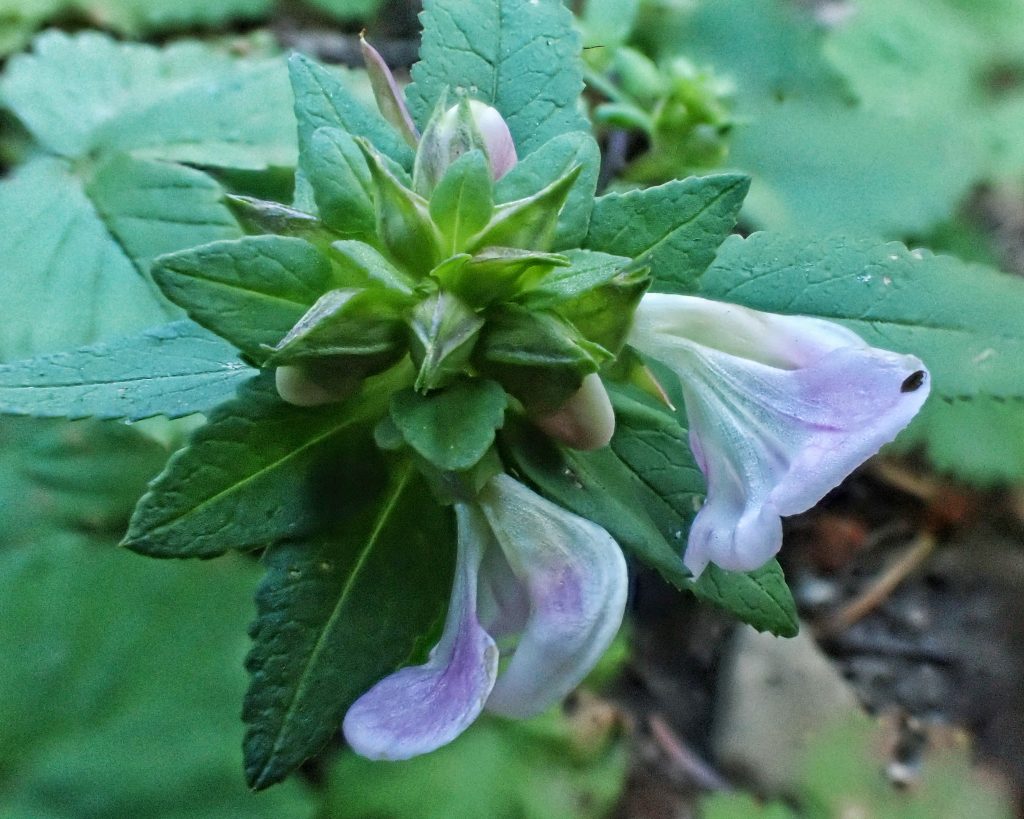
The first and only time I had previously found this member of the family Orobanchaceae (which goes by the common names parrot beak, sickletop lousewort, and leafy lousewort) was last September in the hills above the Wind River in Skamania County, Washington, and unfortunately it got lost in the shuffle of my obsession with conifers at that time. But I immediately recognized the intriguing flowers of this species when I spotted it again recently near my campsite on ‘A Trip to Mt. Adams.’ This is a handsome plant with beautiful flowers, and there have been attempts to grow it horticulturally, but they have all failed, probably because they have not utilized a proper host species, since, even though this is a hemiparasite and can photosynthesize, it apparently needs its partner to initiate the growth process. As near as I can tell, no one knows for sure what that preferred host is. Other Pedicularis are parasites on asters and grasses, but this species is most common in conifer forests, and they may be the host.
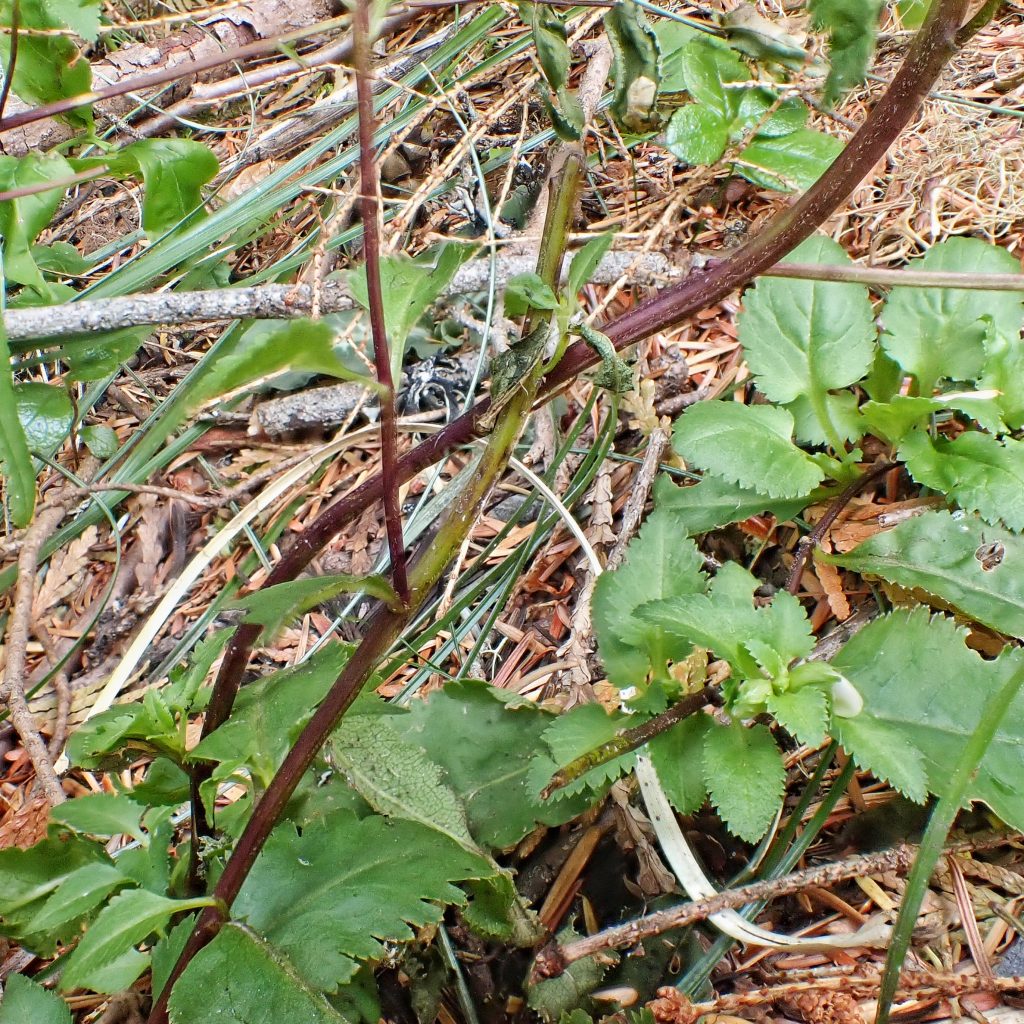
“The unusually shaped flowers are an adaptation to pollination by bumblebees…Traditionally, Pedicularis has been included in the figwort family (Scrophulariaceae). Louseworts have green leaves and produce their own food through normal photosynthesis but also have roots capable of capturing nutrients and water from adjacent plants making them partially parasitic (or hemiparasites). Recent genetic studies have shown that Pedicularis and other hemiparasitic genera in the Scrophulariaceae (including the Indian paintbrushes, Castilleja) are better placed in the broomrape family (Orobanchaceae) with species that are true parasites that lack green chlorophyll…Another recent discovery implicates Leafy lousewort as an alternate host for White pine blister rust. An introduced fungus called Cronartium ribicola causes this infectious disease of five-needled pines. When it first arrived in North America from Europe, White pine blister rust was thought to only utilize gooseberries (genus Ribes of the family Grossulariaceae) as an alternate host in its complicated life cycle. Foresters once waged war to remove gooseberries from pine forests in the west in a fruitless effort to stem the spread of the disease. Infected pines produce resinous lesions that eventually girdle the trunk and cut off flow of water and nutrients. The disease has spread widely across western North America in the last century, greatly reducing the abundance of western white pine (Pinus monticola), and more recently has been implicated in declines of Limber pine (P. flexilis) and Bristlecone pine (P. aristata). It remains unknown whether Leafy lousewort has served as an alternate host for blister rust for decades, or if this relationship has evolved only recently.” US Forest Service ‘Plant of the Week’ entry by Walter Fertig for Leafy Lousewort
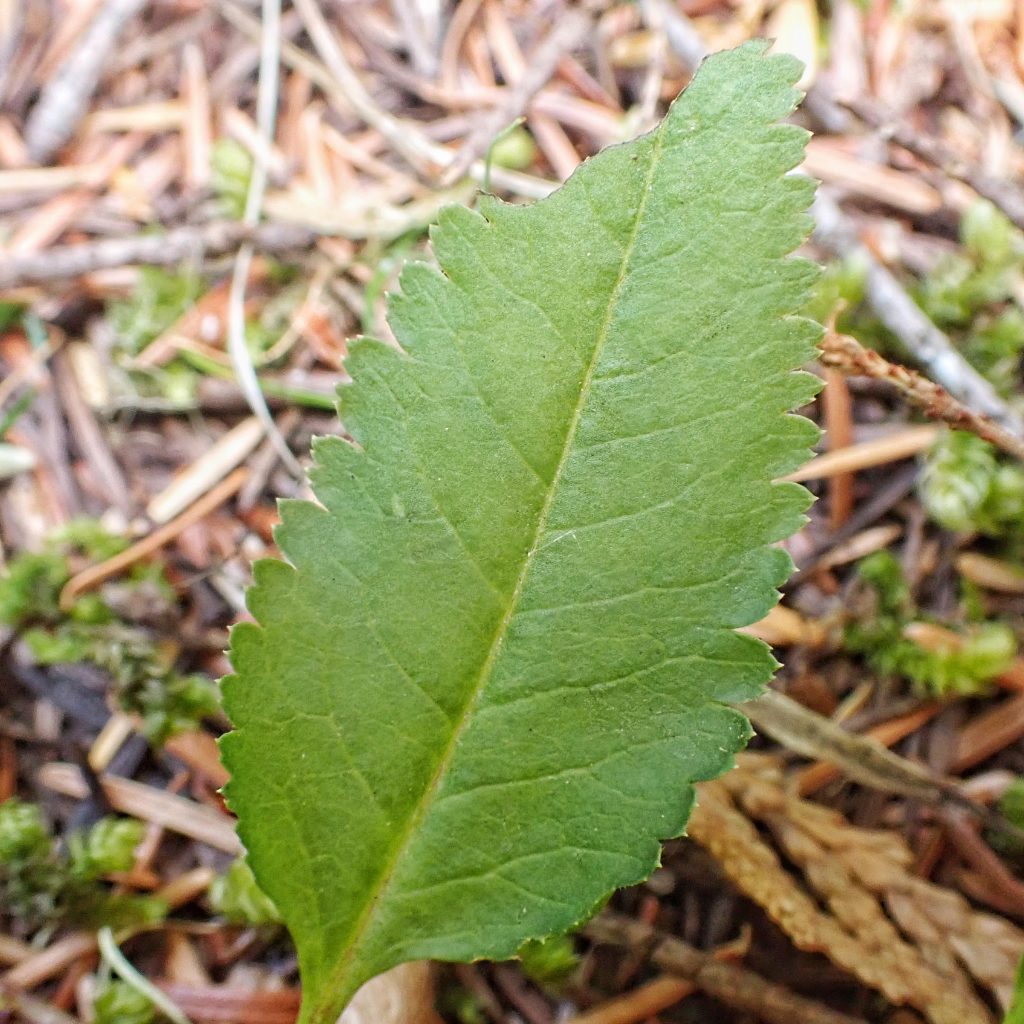
Ethnobotany– The only ethnobotanical use I can find for this plant is that the Thompson tribe used it medicinally for an unspecified purpose; there is a lengthy list of medicinal purposes listed for the genus Pedicularis (a partial list can be found at Neo-cities Pedicularis Sp. – Lousewort), and it is said that the different species have similar properties, but I can find no herbalist/forager information specific to this species
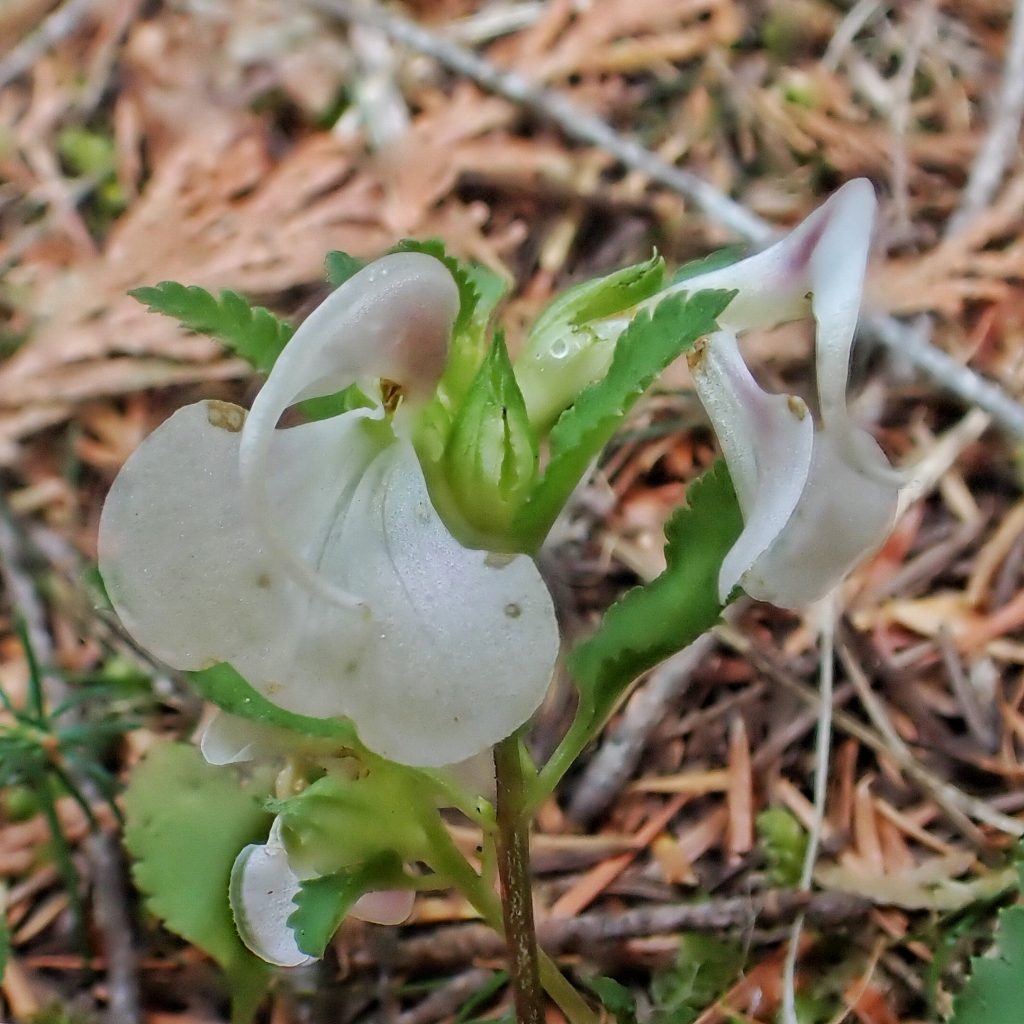
Description-Calyx with 2 lobes “8-20” tall…Cluster of leafy, decumbent or spreading, branched, hairless stems. Leaf blade lance-shaped, undivided, saw-toothed. Flowers on upper stem with leaf-like bracts. Flowers pale pink, purplish, or white, upper lip pointing downward with long, narrow, crescent-shaped tip to one side resting on 3 larger lobes of lower lip.” Pedicularis racemosa | Sickletop Lousewort | Wildflowers of the Pacific Northwest
Similar species– Other Pedicularis have 5 lobed calyx, except for P. crenulata, which is beakless, and occurs east of our region.
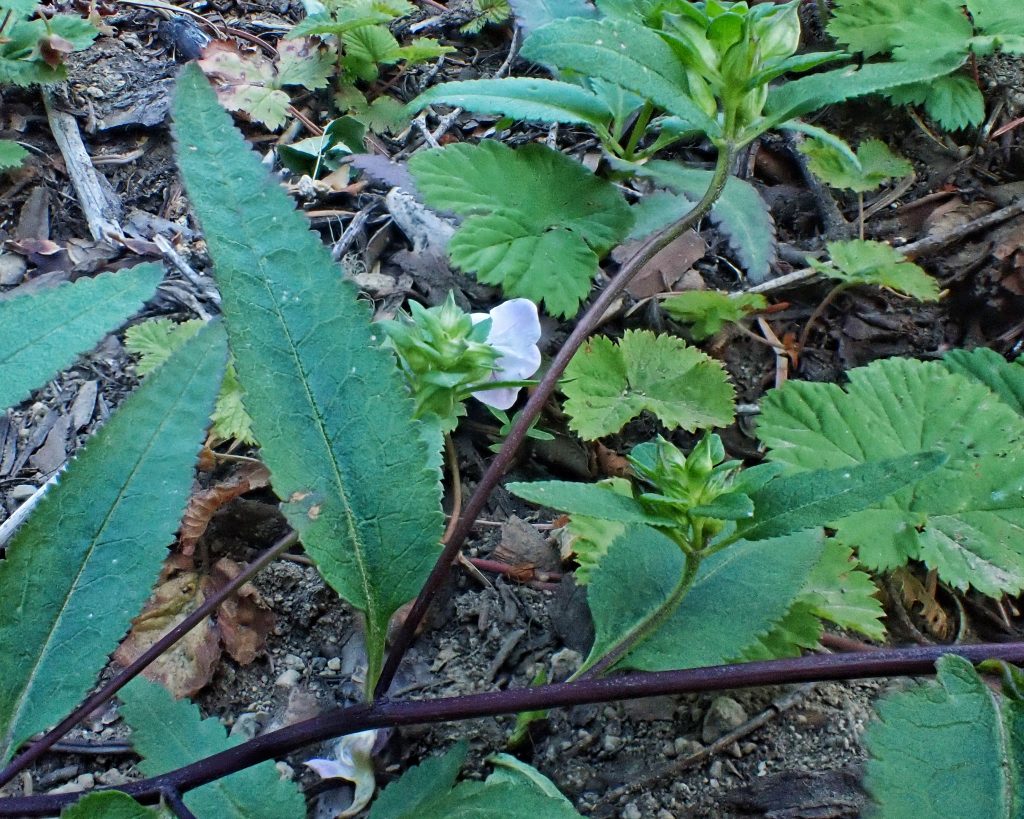
Habitat– Mid to high elevation coniferous forests; “”Shade-tolerant/intolerant, subalpine Western North American forb distributed more in the Cordilleran than the Pacific region. Species occurs in continental boreal and cool temperate climates on moderately dry to fresh, nitrogenmedium soils; occurrence increases with continentality. Common in subalpine meadows and open-canopy, highelevation forests on watershedding sites in the coast-interior ecotone.” Neo-cities entry for Pedicularis Sp. – Lousewort
Range– Native; Western North America; in the PNW it is found in the Cascades, Rockies and associated ranges, Olympics, Sikiyous and associated ranges, and higher elevation portions of the Coast Range.
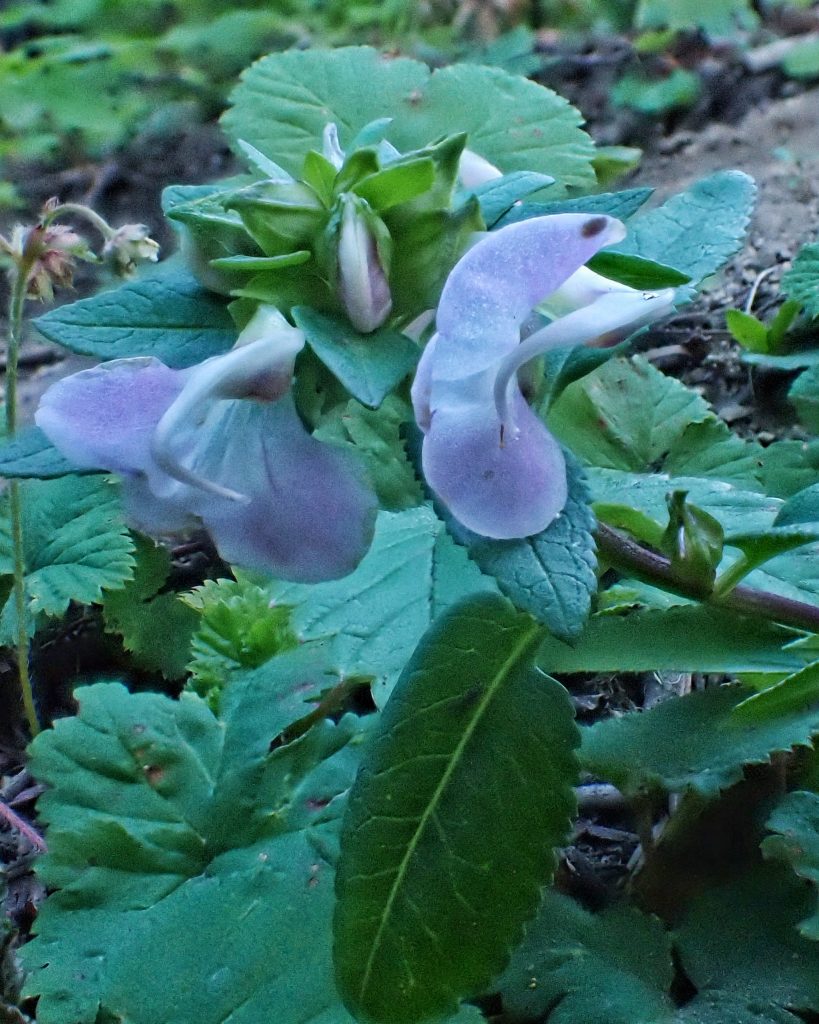
Eaten by– Flowers are nectarless, and are pollinated by pollen foraging bumblebees; larvae of some leaf mining flies in Agromyzidae use this plant; I can find no other information on vertebrate or invertebrate herbivores browsing this plant.
Reproductive timing– Flowers bloom from July into September, depending on latitude and elevation
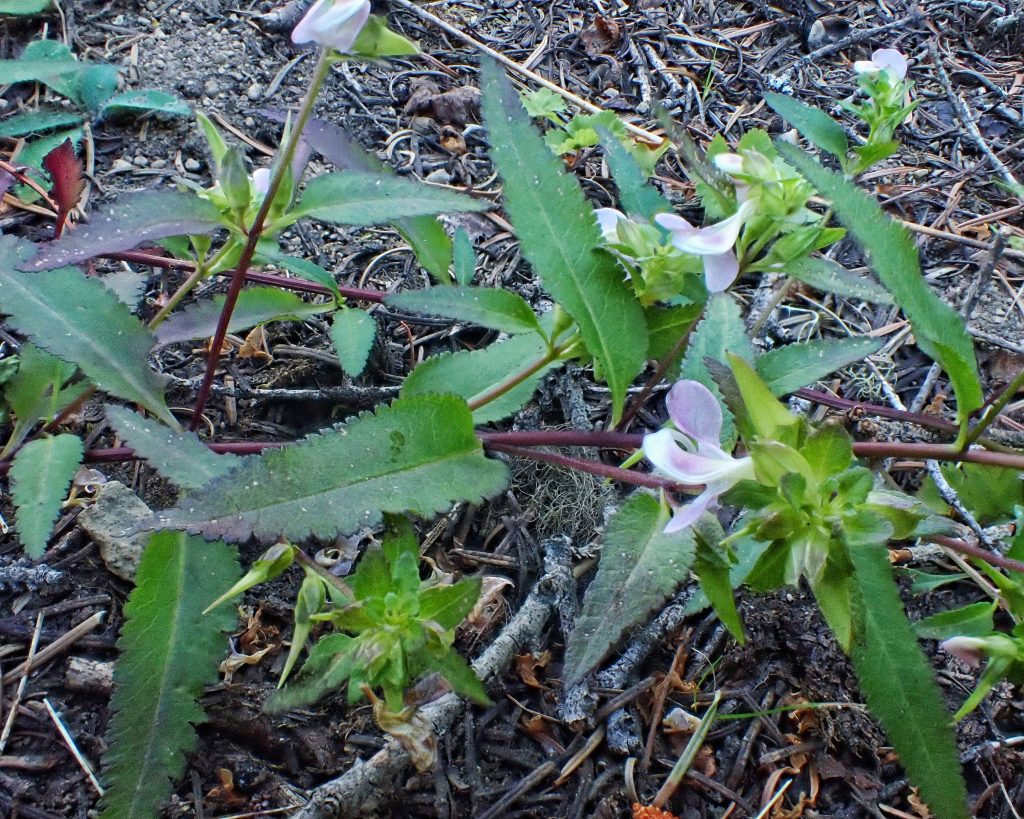
Etymology of names– “ The genus name, “Pedicularis“, given by Linnaeus in 1753, is derived from the Latin “pediculus”, “louse”. A bygone belief had it that the plant gave lice to people and cattle. Or, according to some sources, the plant was thought to cure people or cattle of lice! “Wort” is from the Old English, “wyrt”, meaning “plant” (Figwort, Spiderwort, Spleenwort). Many members of the Pedicularis genus are also commonly called ‘Wood Betony’…” Southwest Colorado Wildflowers, Pedicularis racemosa. The specific epithet racemosa “is from the Latin for “cluster” and is commonly used botanically to describe the form of an inflorescence in which the flowers are attached by a pedicel to an elongated flowering stem.”Southwest Colorado Wildflowers, Pedicularis racemosa
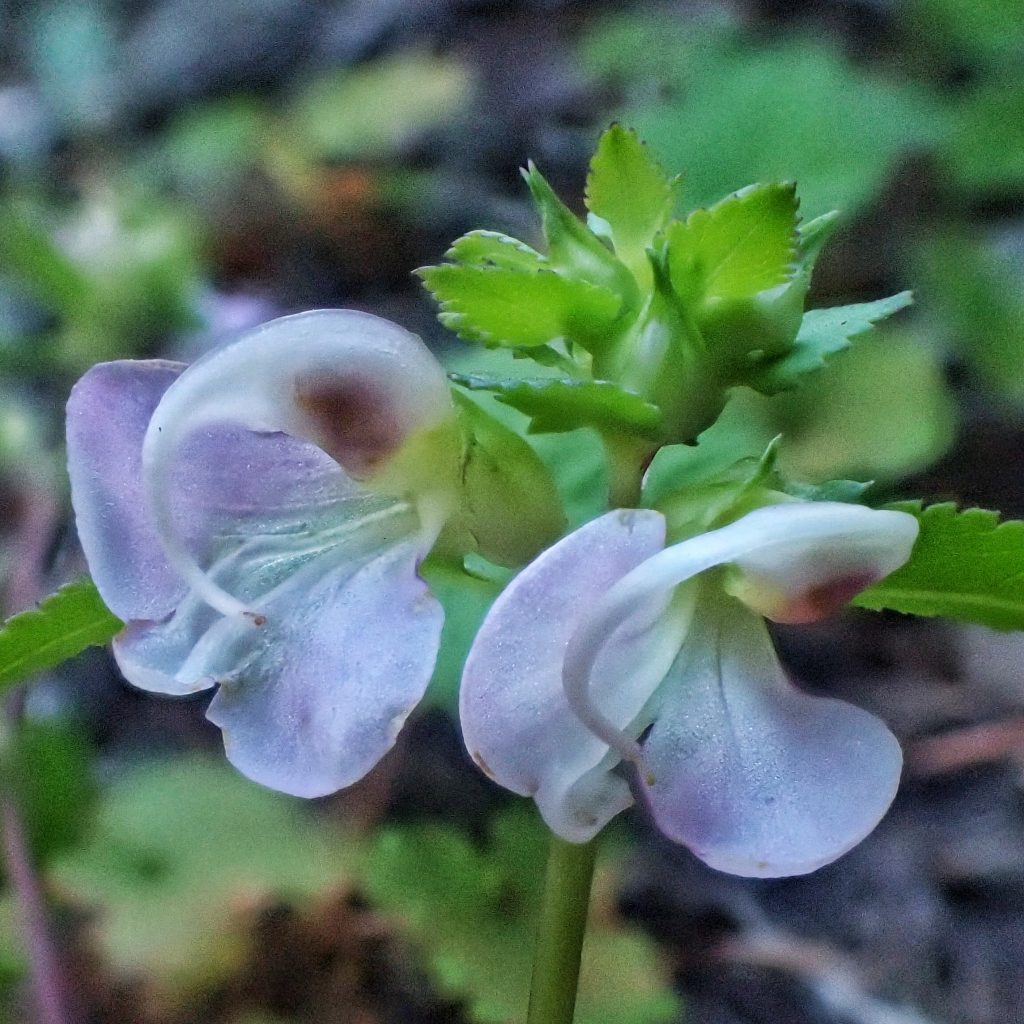
Pedicularis racemosa | Sickletop Lousewort | Wildflowers of the Pacific Northwest
Sci-Hub | The Pollination Ecology of Pedicularis on Mount Rainier | 10.2307/2441066
Hostess with the leastest? — Independence Pass Foundation
BRIT – Native American Ethnobotany Database
https://www.theforagerspath.com/wp-content/uploads/2017/01/pedicularis-spp.pdf
(PDF) Beneficial health applications and medicinal values of Pedicularis plants: A review
Southwest Colorado Wildflowers, Pedicularis racemosa
Pedicularis racemosa var. racemosa – Burke Herbarium Image Collection
OregonFlora Pedicularis racemosa
